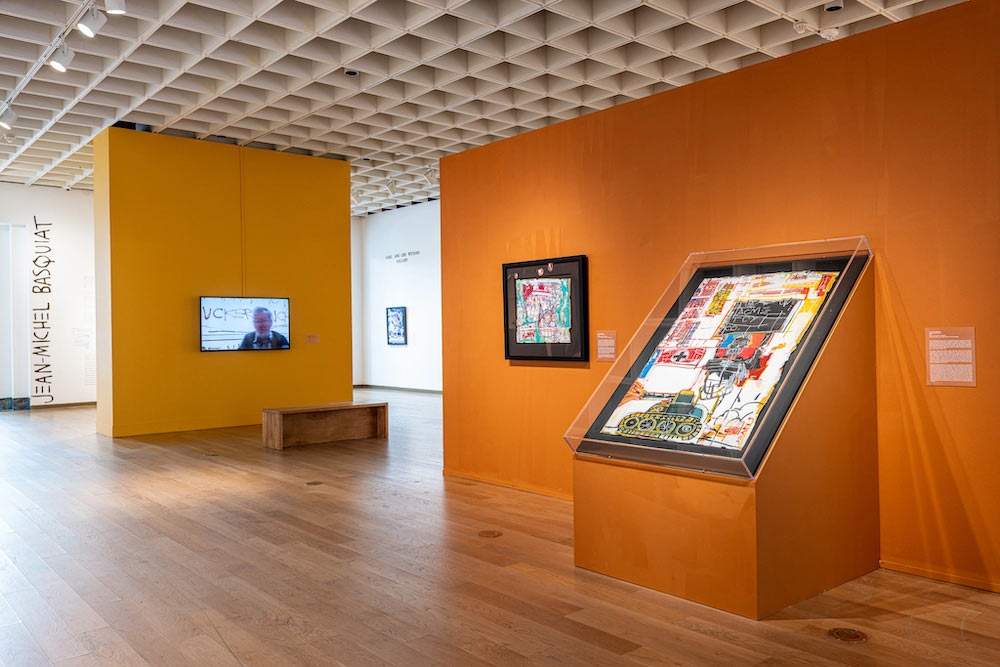Controversy is erupting in the U.S. around an exhibition of works by Jean-Michel Basquiat organized by theOrlando Museum of Art and titled Heroes and Mosters: Jean-Michel Basquiat, The Thaddeus Mumford Jr. Venice Collection. The exhibition, scheduled to run from Feb. 12, 2022, to June 30, 2023, at the Florida museum, will display, according to the museum, “a rare group of paintings from a private collection” (there are twenty-five in all) and which were allegedly created “in 1982 while the artist was temporarily living in Los Angeles, California.” The controversy stems from the fact that, according to some experts, the 25 works on display in Orlando are fakes. In essence, what happened in Genoa around the 2017 Modigliani exhibition is playing out in Florida.
Let’s go in order: according to Aaron De Groft, director of the OMA, the paintings were allegedly sold directly by Basquiat to TV author Thaddeus Mumford, for the sum of $5,000 in all (which equates to about $14,000 today), which Mumford allegedly paid in full in cash. However, nothing was heard of these 25 works for exactly 30 years, that is, until they reappeared in 2012, auctioned off for debt and purchased by two collectors, William Force and Lee Mangin, for about $15,000. Force and Mangin presented OMA with receipts for the purchase, but doubts arose following statements by famed gallerist Larry Gagosian, who knew Basquiat well and told the New York Times that he “thought the scenario of this story highly unlikely.” Gagosian’s concerns, says the New York newspaper, are shared by curators and experts who have written extensively about Basquiat’s work but have decided not to comment on the Orlando exhibition.
De Groft, who also told the New York Times he was very irritated by the skepticism around the works, said he has no doubt that the works are Basquiat’s, saying he is ready to provide evidence, including a forensic investigation from 2017, when a an expert opinion was conducted on the signatures affixed to the disputed paintings, and then again an expert opinion by Jordana Moore Saggese, a professor at the University of Maryland and author of a book on Basquiat, as well as the attribution of Diego Cortez, who knew the artist and was a member of the committee that authenticated Basquiat’s works (now no longer in existence). According to De Groft, however, the queen piece of evidence would be a poem by Mumford from 1982 celebrating the creation of the artworks and the meeting between Mumford himself and Basquiat: the director believes it to be authentic.
The situation is complicated by the fact that, as mentioned, the Basquiat estate, which manages the artist’s legacy, shut down the committee that authenticated the paintings in 2012. Therefore, to understand whether a painting is authentic, one must necessarily reconstruct its history, using art historian methods. The issue is no small one, because if the paintings were authentic they could be worth something like $100 million, and the Orlando exhibition could help revive collectors’ interest around this group of works.
Playing against the works is the silence of many experts, the fact that Sotheby’s has refused to comment on their authenticity, the fact that Mumford’s family had no knowledge of these paintings (Thaddeus’s younger brother Jeffrey said he knew nothing about them, and indeed that his brother “did not often go to art galleries, he was often intimidated by the idea of going because he felt he had to have a degree in art to appreciate the works”), and the doubts raised by some connoisseurs. The New York Times quotes a dealer who personally worked with Basquiat and after seeing the Orlando paintings (in photographs) said, “the way Basquiat places elements in the composition has an inner logic that is missing in these images.” Even John Seed, Basquiat’s assistant, did not know about these 25 paintings on cardboard. And there are other disturbing elements: one of the 25 paintings was done on a FedEx courier cardboard box, but a brand expert said it was a type of box that only went into production in 1994.
The museum, in the eye of the storm, intervened last Feb. 18 with a post on its Facebook page to express its position: “We recognize the challenges that are posed when new works appear after the dissolution of an artist’s legacy authentication committee,” OMA wrote. “That is why we diligently undertook a very rigorous process of research and evaluation before opening this exhibition. The works have been fully authenticated by reliable sources, including the person who led the Basquiat estate authentication committee [...]. We are certain of the authenticity of the works and are proud to present them to the public for the first time.” Judging by the comments, however, the museum does not seem to have been convincing. We will see how the case evolves.
Pictured is a room from the exhibition
 |
| U.S., controversy around a Basquiat exhibition: as many as 25 fakes allegedly on display |
Warning: the translation into English of the original Italian article was created using automatic tools. We undertake to review all articles, but we do not guarantee the total absence of inaccuracies in the translation due to the program. You can find the original by clicking on the ITA button. If you find any mistake,please contact us.